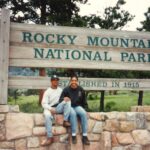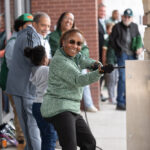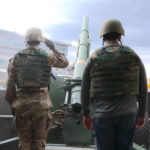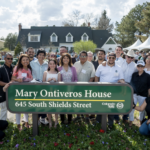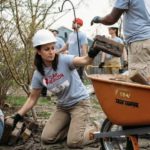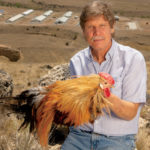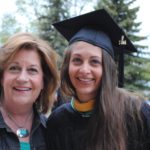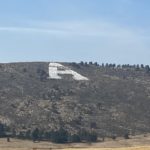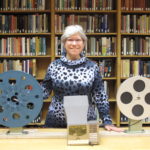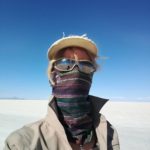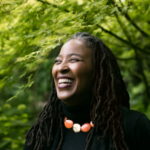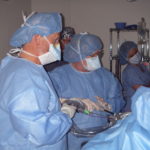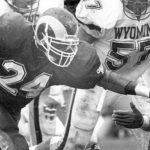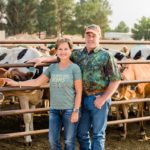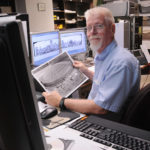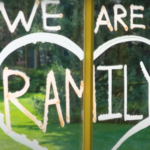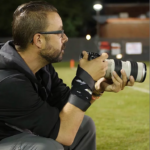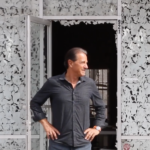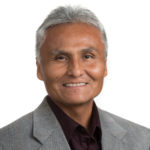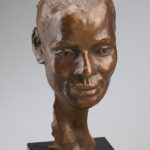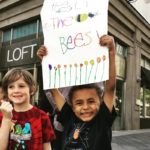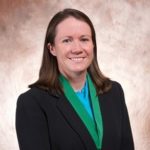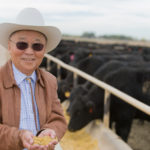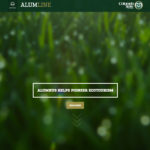By Angie Dixon (B.A., ’94)
As our community celebrates Colorado State University’s 150th anniversary this year, it’s clear that much of CSU’s 150-year history is present in the heart of campus, in our beloved Oval. Imagine if the 93 American Elms that complete the Oval could share CSU’s past with us. Have you ever wondered what they might say?
Perhaps they would talk about celebrations and recount the countless number of graduations, marriage proposals and other milestones celebrated under their leaves. Or maybe they would talk about resiliency and how they’ve seen our community come together when it’s been stricken by manmade and natural disasters, including two world wars and our current COVID-19 outbreak. They might even talk about love and describe how it feels to be nurtured by generations of dedicated arborists and maintenance teams who have thoughtfully cared for, and stewarded, the tradition and vision of the Oval so that its canopy can be the beacon for CSU’s purpose for the next 150 years.
Whatever their stories might be, if anyone could speak for the trees, it would be Fred Haberecht and Rodney Gillespie from CSU’s facilities management team. Their crew of five certified arborists, 27 grounds keepers, and 80 student employees are responsible for maintaining the Oval and CSU’s entire urban forest, which will include a diverse population of 7,000 trees by the end of April.
But for them, their work goes far beyond maintaining trees. For them, their efforts preserve CSU’s timeless mission and all that the Oval, and its trees, represent for our community.
“It definitely takes a village,” Haberecht said about maintaining the Oval, “but it’s an honor to be a part of the legacy and continuation of preserving such a special place.”
Many trees in the Oval, including the trees that line the center pathway, were part of the initial 3,000 trees that were planted on campus in 1881. That major planting also signaled the beginning of CSU’s urban forest on campus.
“Even though CSU was in its infancy, the University understood the long-term value in trees,” Haberecht said.
The idea of the Oval didn’t come into play for CSU until 1910, when buildings also started to shape the new campus. But campus development would abruptly stop because of World War I, and it would not resume until 1922. The Oval was eventually completed in 1928, and stewardship has been a central theme for the Oval ever since.
“The Oval has certainly been faced with challenges over the years,” said Haberecht as he recalled the devastation caused by an outbreak of Dutch Elm disease in the 1960’s and ‘70’ and the University’s efforts to maintain healthy trees while entire communities were chopping them down.
“We would isolate our healthy trees by digging big trenches around their roots to keep the disease from spreading,” continued Rodney Gillespie. “Because of our efforts, we only had to remove three trees from the Oval because of the disease.”
“Good stewardship, and a strong treatment plan have helped our trees survive hard times,” said Haberecht.
On average, CSU spends $30,000 on tree preservation annually, which includes pruning and treating pests.
Colorado’s climate and snowstorms also take their toll on the Oval, especially on younger trees.
“We lose more trees that are younger than 15 years old than we do trees 100 years or older because of the weather,” said Haberecht. “But if we lose a tree, we replant a new one in its place. We want to keep using the space.”
Overuse also puts the Oval’s health and wellbeing at risk. Haberecht and Gillespie recalled a study completed 30 years ago that recommended the Oval be cut down because it was in such strong decline.
“We were loving the Oval to death,” commented Haberecht. “Everyone wanted to host an event on the Oval because it was the best place on campus for an event. But it won’t be the best place on campus if we overuse it.”
Since then, Haberecht and Gillespie have worked to prioritize events hosted on the Oval, which include the President’s Fall Address and Homecoming.
“We’ve made some difficult decisions along the way, but I am proud that our community has worked together to do what’s best for the Oval.”
Haberecht and Gillespie both agree that CSU’s legacy, and the stories of people who built this place, live in the trees, and they are grateful for the community’s commitment to preserve the Oval. They also believe that April’s planting of 150 additional trees on campus allow us to leave a legacy for the future.
“We are planting a diverse population of trees all around campus, which will make our campus more resilient overall,” Haberecht said. “My hope is that these trees last longer than our buildings,” he chuckled.
But as he and Gillespie both agreed, a commitment to preserving the trees for lifetimes of others to enjoy is something that remains.
“When I see a student in their cap and gown celebrating in the Oval, and knowing that this has been happening for 150 years gives me great joy,” Haberecht said, “And when I see the joy that this space is brings our community, that is the pinnacle of my job for me.”
Anyone interested in contributing to the preservation of the Oval and learn more at www.giving.colostate.edu.
Celebrating a Tradition of Giving
 Founded in 1870, Colorado State University is celebrating its 150th anniversary throughout the 2019-20 academic year. From the moment the first graduating class received their diplomas, alumni have committed themselves to making an impact in their communities, the world, and their alma mater through their talents, hard work, and ongoing generosity. Learn more about 150 Years of Impact at giving.colostate.edu.
Founded in 1870, Colorado State University is celebrating its 150th anniversary throughout the 2019-20 academic year. From the moment the first graduating class received their diplomas, alumni have committed themselves to making an impact in their communities, the world, and their alma mater through their talents, hard work, and ongoing generosity. Learn more about 150 Years of Impact at giving.colostate.edu.


